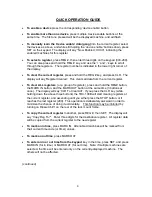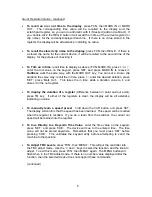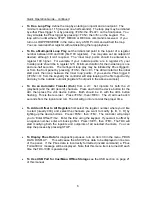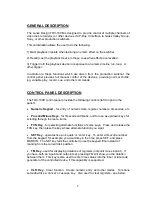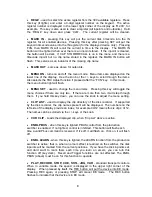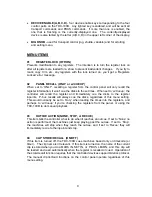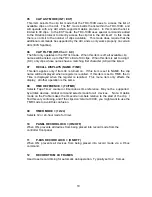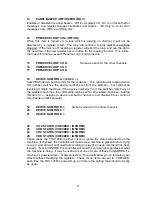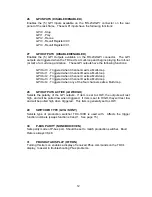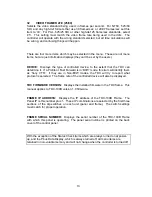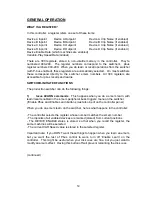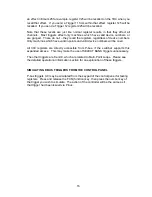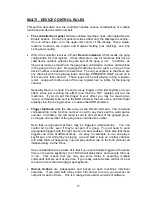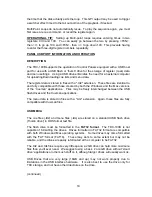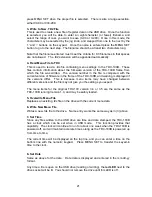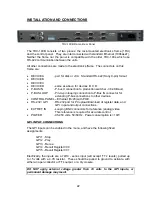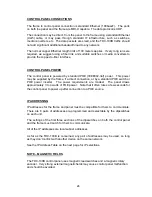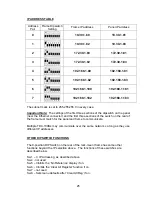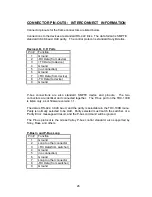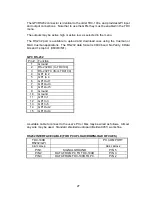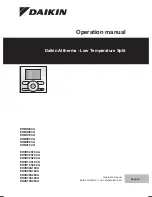
17
MULTI - DEVICE CONTROL RULES
This section describes how the controller handles various combinations of multiple
machines and device enable numbers
The controller front panel
controls enabled machines; ones with lighted Device
Enable buttons. Some front panel functions affect only the Displayed machine -
the one whose letter is in the upper left corner of the display. These single-
machine functions are Inpoint and Outpoint Setting (not marking), and Clip
Listing and Loading.
When the controller receives a P-bus
Recall command
, it first recalls the gang
configuration for that register. It then attempts to cue all machines that have a
valid device number, whether they are part of the gang or not. In addition, as
long as at least one machine in the gang has a valid device number, all machines
in the gang will be cued. Non-ganged machines can be cued, so long as their
device number is enabled on the switcher. The only exceptions to the above are
any channels which are playing loops, and have PRESERVE LOOP turned on in
the menu (for that channel). These loops will be left playing during a register
recall. Loops will continue also if the new register has no intime for the looping
channel.
Generally there is no need to send a ‘recue’ trigger on the first keyframe of your
effect, since just recalling the effect (and thus the TDC register) will cue the
machines. If you do put this trigger in your effect you may be causing two
‘cueup’ commands to be sent to the DDR at almost the same time, and this might
actually slow the cueing process, or cause other DDR problems.
Trigger functions
work the same way as the Recall command. The command
corresponding to the function number is sent to any device with a valid device
number. In addition, the command is sent to all members of the ganged group,
so long as one member of the gang has a valid device number.
Note that non-ganged machines may be triggered independently. You can
control all 4 ports, even if they’re not part of a gang. You just need to send
appropriate triggers with the right device numbers enabled. Note also that these
triggers can come at different times. It’s easy, for example, to cue and play a
key/fill pair, and while they’re playing, cue and start a loop on another channel,
and while that’s all happening, cue and play another clip on the forth channel, all
independently, via the P-bus.
One consideration to be aware of is that if you send multiple triggers at the same
time (on the same keyframe), the TDC100 will stack them, and execute them as
it can. This means that you may see some delay in executing multiple
commands that are sent at one time. If you really want accurate control, it’s best
to send no more than one trigger per keyframe.
Outcue Actions
are independent, and based on each machine’s individual
outpoints. If you want both a Key and a Fill channel to recue, you must set an
outpoint for each of them. This is a change from earlier versions of software.
Содержание TDC-100B
Страница 28: ...28 Notes...


